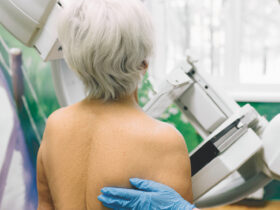 Systemic lupus erythematosus (SLE) is a chronic autoimmune disease that can affect multiple organ systems in the body. One of the less common symptoms of SLE is heel pain, which can be debilitating and impact a person’s quality of life. In this essay, I will explore the relationship between systemic lupus erythematosus and heel pain, discussing the potential causes of heel pain in individuals with SLE and the treatment options available to manage this symptom.
Systemic lupus erythematosus (SLE) is a chronic autoimmune disease that can affect multiple organ systems in the body. One of the less common symptoms of SLE is heel pain, which can be debilitating and impact a person’s quality of life. In this essay, I will explore the relationship between systemic lupus erythematosus and heel pain, discussing the potential causes of heel pain in individuals with SLE and the treatment options available to manage this symptom.
There are several potential causes of heel pain in individuals with systemic lupus erythematosus. One possible explanation is inflammation in the joints and soft tissues surrounding the heel, which can result in pain and stiffness. In addition, individuals with SLE may experience vasculitis, a condition in which blood vessels become inflamed, leading to poor circulation and tissue damage in the feet. This can contribute to heel pain and other symptoms such as ulcers and skin changes.
Another factor that may contribute to heel pain in individuals with SLE is the presence of comorbid conditions such as plantar fasciitis or Achilles tendonitis. These conditions can cause pain and discomfort in the heel area, exacerbating the symptoms experienced by individuals with SLE. Additionally, some medications used to manage SLE symptoms, such as corticosteroids, can also contribute to the development of heel pain as a side effect.
Treatment options for heel pain in individuals with systemic lupus erythematosus vary depending on the underlying cause of the pain. In cases where inflammation is the primary factor contributing to heel pain, nonsteroidal anti-inflammatory drugs (NSAIDs) and corticosteroid injections may be recommended to reduce swelling and discomfort. Physical therapy and stretching exercises may also be beneficial in improving flexibility and reducing pain in the heel area.
For individuals with SLE who have comorbid conditions such as plantar fasciitis or Achilles tendonitis, treatment may involve orthotic devices, such as shoe inserts or braces, to support the foot and reduce pressure on the heel. Physical therapy and stretching exercises targeting the affected tendons and ligaments can also help improve symptoms and promote healing. In cases where conservative measures are ineffective, surgical intervention may be necessary to address structural abnormalities contributing to heel pain.
In conclusion, heel pain is a common but often overlooked symptom of systemic lupus erythematosus. Understanding the potential causes of heel pain in individuals with SLE and implementing appropriate treatment strategies are essential in effectively managing this symptom and improving overall quality of life for patients with this chronic autoimmune disease. By addressing the underlying factors contributing to heel pain and implementing individualized treatment plans, healthcare providers can help individuals with SLE alleviate discomfort and maintain functional mobility in their daily lives.
Disclaimer: This content is not intended to be a substitute for professional medical advice, diagnosis, or treatment. Always seek the advice of your physician or other qualified health care provider with any questions you may have regarding a medical condition.
Sahiba Singh DPM, AACFAS
For more information, you may contact Dr. Sahiba Singh at
Family Foot & Leg Center at
(239) 430 – 3668 (FOOT).
Family Foot & Leg Center has 8 locations throughout Collier, Lee, & Charlotte Counties to quickly resolve all your foot and ankle problems.
FAMILY FOOT & LEG CENTER
6846 International Center Blvd, Suite B
Fort Myers, FL 33912
(239) 430 – 3668 (FOOT)
www.NaplesPodiatrist.com









